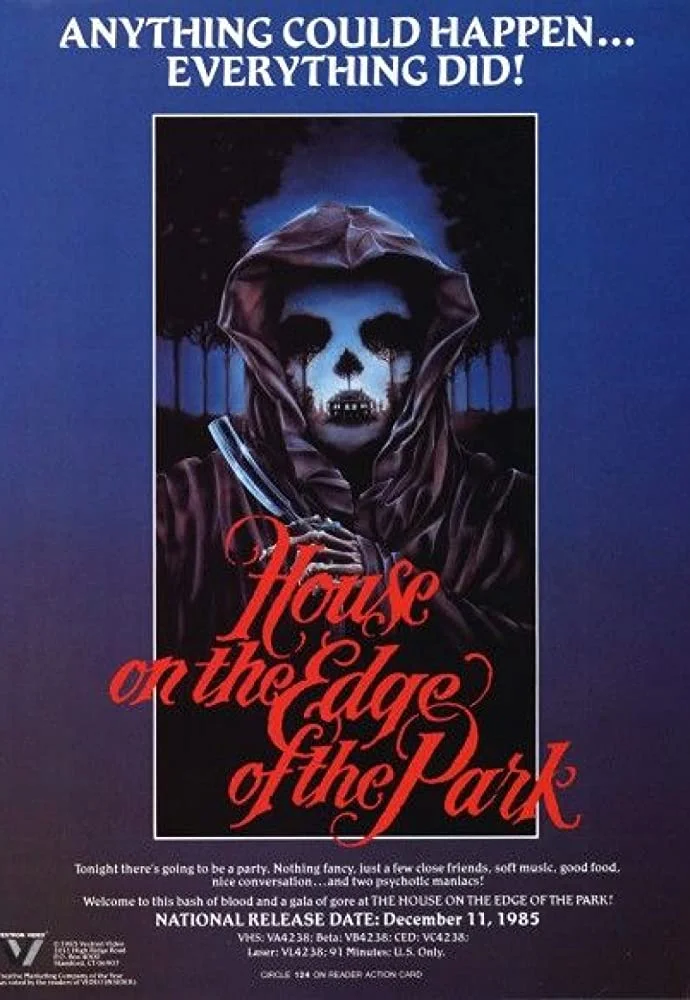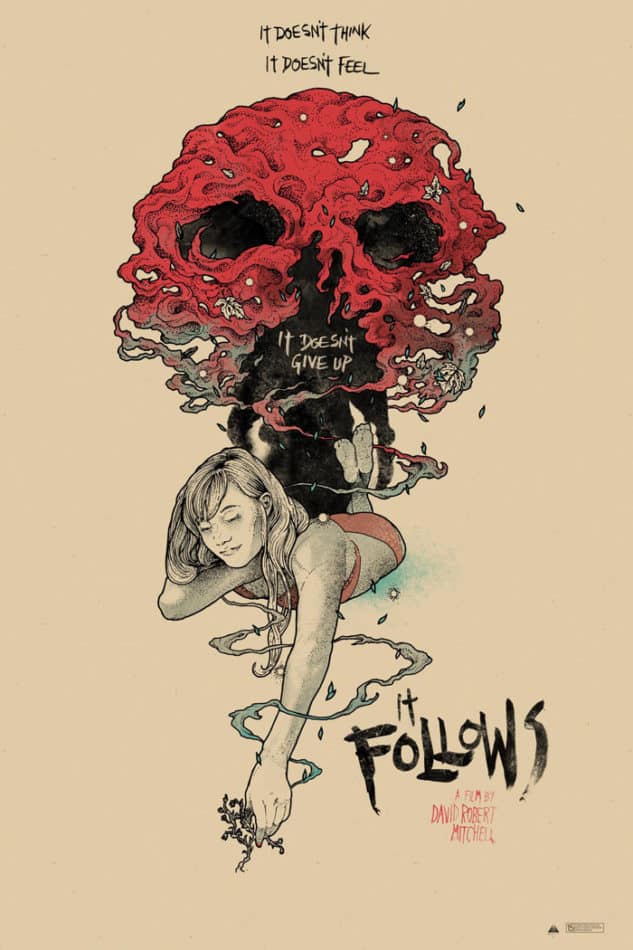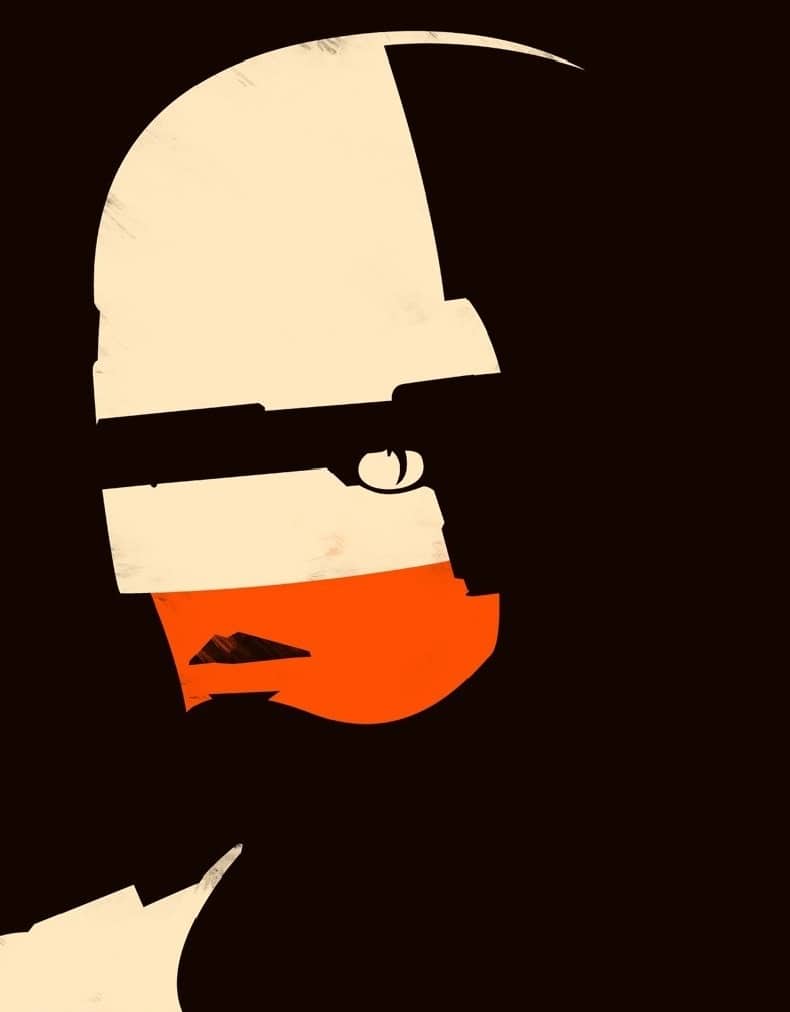
Musical Nasties is a series of articles exploring the music of cinema’s most salacious fare. From video nasties of the ‘80s, to classic Italian gialli and schlock, to contemporary cult cinema, we aim to celebrate our favorite genre movies, their music, and the maestros behind them. Join us as we indulge in the Grand Guignol pleasure that can only be found in hearing great music play as blood flows, black gloved killers roam, and flesh is exposed, all while the celluloid rolls.
Content warning: This article contains references to sexual violence.
Sometimes, the most beautiful music can be found in the ugliest movies. Video nasty classic House on the Edge of the Park, with its vile visuals and shockingly sweet soundtrack by Riz Ortolani, makes a strong case for why this perverse approach is so effective.
Directed by Italian-exploitation master Ruggero Deodato, House on the Edge of the Park (or La casa sperduta nel parco for all you Italo-philes out there) is essentially a copycat take on Wes Craven’s landmark Last House on the Left. In it, we follow Alex (played by Last House star David Hess, on double exploitation duty) as he and fellow garage attendant Ricky (the ever-enjoyable Giovanni Lombardo Radice) terrorize a group of bourgeoisie partygoers over the course of a night at a posh villa. While you might be familiar with this type of gruesome “class revenge” story, the music it’s set to still packs plenty of surprises.
Much like Deodato’s and Ortolani’s mutual masterpiece Cannibal Holocaust, with its legendary laid-back theme, Park’s soundtrack is centered around a track seemingly stolen from a first dance at a wedding. “Sweetly” floats into the film on a gently warbling piano and the angelic voice of Diana Corsini, as if blissfully unaware of the sleazy affair it’s stumbled into. Rather than a predictable, nightmarish soundscape, Ortolani delivers a lullaby, and a brilliant one at that. In an atrocity exhibition of particularly cruel violence—hell, our lead character rapes and murders a woman before we even see the opening title—the musical subversion not only works to take an edge off the unrelenting violence the film dares us to endure, but transplants us squarely into the mind of Hess’s psychopathic Alex. As the film reaches its twisted conclusion, we’re left to reckon with the previous 90 minutes of nearly non-stop brutality with lyrics like, “Sweetly, o sweetly… happy and carefree, waiting just for you.” It’s here, as the final credits play, that the song’s polarizing effect is most potent, lingering in your memory amidst the film’s most violent images with a haunting sense of bittersweet irony.
Park’s next sonic surprise comes in the form of the stone-cold disco cut “Do It To Me.” To the oh-so-‘80s question, “Are we gonna boogie?” that Lombardo Radice delivers with glee early in the film, this track provides a resounding “Hell yes.” It’s an unbelievably groovy cue, one that transcends the terror on screen to compel your feet to start tapping and head bobbing. You can almost feel a jab from Ortolani and Deodato to their audience as they deploy this track, as if saying with a wink, “You’re enjoying this aren’t you?” reminding us of the sick voyeuristic pleasure we get from the carnage on display.
Two additional, more atmospheric, cues round out the relatively short but sweet tracklist. “Terror Sequence” plays nearer to expectations with a great creeping bassline, ominous vocals, and sinister, jazzy cymbal taps that were common to the Italian suspense and horror fare of the era. Meanwhile, “Love Sequence” effectively uses an uplifting melody and easy-listening quality to imply a corrupted sense of hope and longing to a situation that couldn’t be more devoid of the qualities.
Misogyny, torture, rape, murder, airy melodies, angelic singing, and groovy disco, House on the Edge of the Park has it all. On paper, these sights and sounds appear to be a jarring juxtaposition, but in practice they’re not only effective, but a thoroughly entertaining match. What we hear not only works as a balm to the film’s particularly nasty worldview, one which it loves to rub our faces in at every turn, but it’s also a smarmy bit of ‘sploitation irony. Through their musical choices, Ortolani and Deodato effectively remind us that despite everything we’re seeing, we aren’t just repulsed by the sick and twisted story unfolding. Sure, the imagery on display is cruel, gruesome, and, to many folks, likely unpalatable. But, as the credits rolled over an equal parts amazing and effed up final freeze frame, I can confidently say that this genre movie fan couldn’t resist the grin widening across my face.
Be it bobbing to that damn-groovy disco beat or simply basking in the perverted juxtaposition of what I was watching and hearing, if you asked me if I enjoyed this particularly nasty picture, well, I’d have to say… guilty as charged.
About the Author: Hey, I’m Sam. I like violent movies with synth scores and listening to library music on the beach. My perfect idea for a date is taking a trip to 1970s Italy where I can stumble into a stylish murder mystery involving a black-gloved killer featuring music by Ennio Morricone. I live in Vancouver, B.C. and think too hard about what I write on my Letterboxd. Twitter: @mondosammi
Editor’s Note: The film’s title can be found as both House on the Edge of the Park and The House on the Edge of the Park. For purely stylistic reasons, we have opted to use the former.


